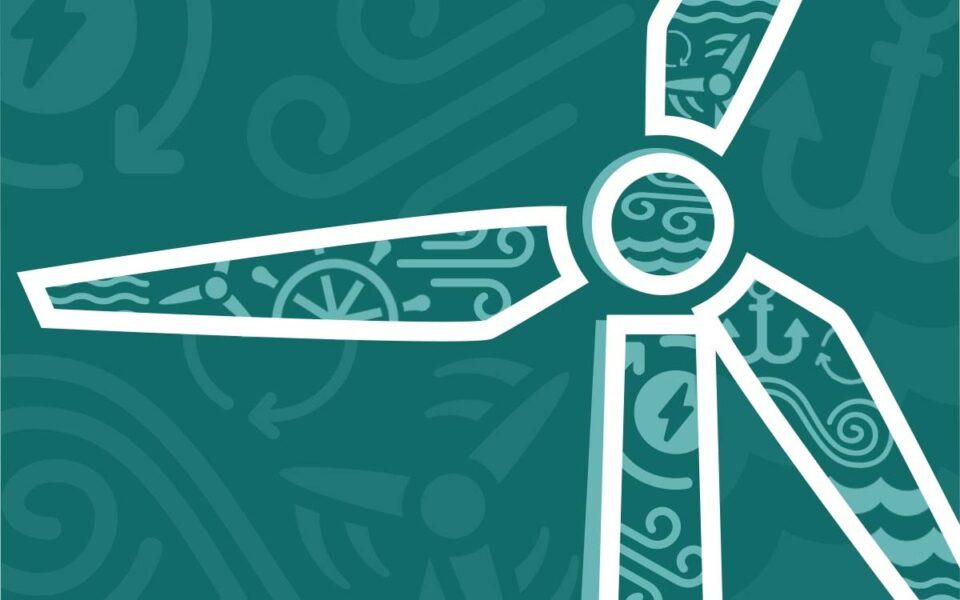A New York Court Propels Offshore Wind Forward
Madeline Schwartz / July 26, 2023

This piece is part of our Student Blog Series, featuring posts on climate, clean energy, and environmental issues from the State Impact Center’s legal interns and other students working with the Center.
An offshore wind project in New York recently survived a legal challenge and construction is moving forward. As one of the first offshore wind projects in New York, South Fork Wind is an important precedent for other projects like it in the state and the region.
The Climate Leadership and Community Protection Act — New York state’s climate bill passed in 2019 — sets a path for the state to reach net zero greenhouse gas emissions and incorporates several environmental justice elements. The law requires that 70% of the state’s electricity come from renewable sources by 2030. Meeting this goal will require significant work, as in 2020, only about 28% of New York’s electricity came from renewable energy sources.
One way the state plans to meet these goals is offshore wind. The law stipulates that 9,000 megawatts of offshore wind energy should be deployed by 2035. The South Fork Wind Project is the state’s first offshore wind project. Located thirty-five miles east of Montauk Point, the farm is set to generate 130 megawatts of energy. On June 23, 2023, it reached a foundational milestone. The first monopile foundation of the project was installed and “steel in the water” was achieved. The project also overcame a hurdle in May 2023 when it survived a legal challenge to its transmission line, which was brought by local residents.
From the outset, South Fork Wind received pushback and legal challenges from local residents. Their concerns included the duration of the construction project and the need for continued maintenance. They also raised environmental concerns, including potential impacts to a nearby pond and wetlands, polyfluoroalkyl substances (PFAS) contaminating water and soil, and impacts to North Atlantic Right whales. The Shinnecock Indian Nation also raised concerns about the endangered whales as part of their “work[] to protect marine life from wind farms under construction around Long Island.”
However, in its Final Environmental Impact Statement on the South Fork project, the Department of Interior’s Bureau of Ocean Energy Management found that the potential environmental impacts to water quality and wetlands would be minor; and that the total cumulative adverse impacts to marine mammals, which include North Atlantic Right whales, could be moderately adverse or minor and perhaps even beneficial.1
One legal challenge brought by local residents involved the project’s transmission line, which will bring the energy on shore and into Long Islanders’ homes. After extensive surveying, the project developers identified Beach Lane in Wainscott in the town of East Hampton as the ideal landing point for the transmission line. The route was chosen to cause as little disruption as possible and to maintain beach access. In New York, transmission lines must receive a certificate of environmental compatibility and public need from the Public Service Commission. Local residents, through the group Citizens for the Preservation of Wainscott, opposed the certificate proceedings at the Public Service Commission. The commission granted the certificate in March 2021. After Citizens for the Preservation of Wainscott unsuccessfully petitioned for a rehearing at the commission, they challenged the matter in state court. In May 2023, the court denied a petition for review of the certificate approval. Construction of the transmission line can now proceed.
This is significant because, as Devlyn Tedesco of Foley Hoag LLP writes, “[a]s the first offshore wind transmission line to go through [the state’s] major transmission facility siting process, South Fork Wind had significant first mover burden as stakeholders knew the process would set precedent for all future offshore wind projects in New York.”
Currently the state has “five offshore wind projects in active development . . . totaling more than 4,300 megawatts and representing nearly 50 percent of the capacity needed to meet” the goal. These projects promise to benefit all New Yorkers, and particularly those in coastal communities — such as the South Fork — who are increasingly vulnerable to rising sea levels and stronger hurricanes. These projects may also present environmental justice challenges. UPROSE, Rogue Climate, Taproot Earth, and Climate Justice Alliance have proposed that offshore wind projects incorporate environmental justice principles, such as the Principles for a Just Transition in Offshore Wind Energy. In addition, as Mo-Yain Thaim, NY Policy Manager for Jobs to Move America wrote in this blog earlier this year, the local jobs generated by the budding industry should include “strong labor parameters . . . to ensure that [the] jobs will be good jobs.” To do so, it is critical that regulators “make participation accessible, prioritize listening to input from impacted community members, and adequately address concerns, so that impacted communities can enjoy the economic benefits of these offshore wind developments.” While South Fork’s recent developments signal New York is spinning towards its offshore wind goals, there is still plenty of work to be done.
- The adverse impacts “are expected to result mainly from pile-driving noise and increased vessel traffic.” For some marine mammals, “[b]eneficial impacts are expected to result from the presence of structures,” because they will create artificial reefs that will attract food sources. In addition, mitigation measures are underway for the protection of the North Atlantic Right whales, “such as concentrating construction within a timing window when [they are] least likely to be present.”
